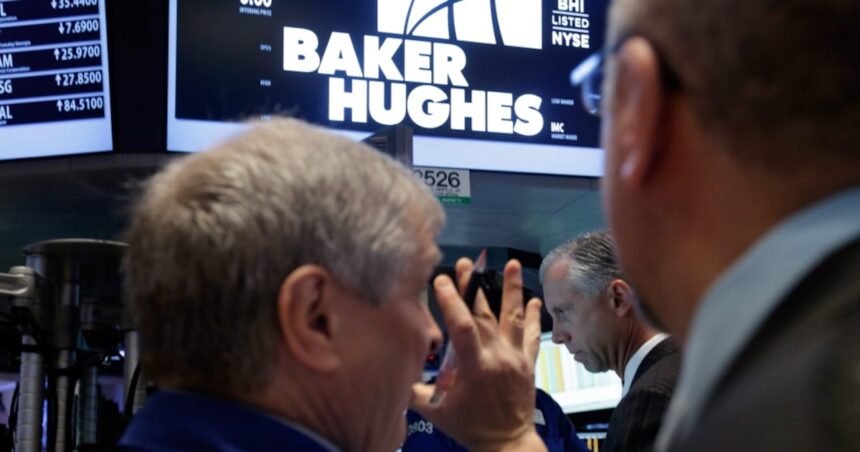When I first heard about Baker Hughes’ eye-popping $13.6 billion bid for Chart Industries, I immediately called three energy analysts I trust. Their consensus? This isn’t just another consolidation play—it’s a calculated bet on two converging global demands: liquefied natural gas (LNG) and the explosive growth of power-hungry data centers.
The acquisition, announced early Tuesday, represents a 35% premium over Chart’s closing price last Friday. For those unfamiliar with Chart Industries, the company has spent decades perfecting the technology that cools and processes gases into liquid form—essentially the plumbing that makes LNG possible. Their specialized cryogenic equipment handles everything from production to storage and transportation.
“Baker Hughes is positioning itself for what could be a decade-long boom in LNG infrastructure,” explained Sarah Kovac, energy transition analyst at Rystad Energy, when I reached her by phone. “But what makes this deal particularly interesting is the data center angle that few people are talking about.”
That angle deserves unpacking. The same cooling technology that Chart has mastered for gas liquefaction has increasingly found applications in managing heat generated by massive data centers—the physical backbone of AI development. According to the International Energy Agency, data centers already consume about 1-1.5% of global electricity, and AI-related demands could double or triple those requirements within five years.
Baker Hughes CEO Lorenzo Simonelli framed the acquisition as “a natural evolution” during Tuesday’s investor call. “Energy demand is not an either/or proposition between traditional and emerging sources,” Simonelli stated. “Chart’s technology sits at the intersection of traditional energy security and enabling next-generation computing infrastructure.”
The numbers tell a compelling story. Chart’s revenue from data center cooling solutions grew 78% last year, according to the company’s annual report. Meanwhile, global LNG demand is projected to increase by 50% by 2035, based on Shell’s LNG Outlook.
Canadian energy producers and infrastructure companies are watching this deal closely. TC Energy and Enbridge, which transport much of Canada’s natural gas, could see downstream benefits if Baker Hughes’ bet pays off. The acquisition signals confidence that North American gas will continue flowing to energy-hungry markets in Europe and Asia, despite current price weaknesses.
For context, this isn’t Baker Hughes’ first significant move in the LNG space. The company has steadily expanded its LNG equipment portfolio since its own restructuring in 2017. What makes this deal different is its size and timing—it’s the largest oil services acquisition since the pandemic.
“Baker Hughes is paying a premium, no question,” noted David Anderson at Barclays Capital. “But they’re buying an integrated solution that touches multiple growth markets, from hydrogen to biogas to data center cooling.”
The market reaction has been mixed. Baker Hughes shares initially dropped 7% on news of the deal, with some investors questioning the premium paid. Chart’s stock, meanwhile, surged 29%, still slightly below the offered acquisition price, suggesting some skepticism about regulatory approval.
Speaking of regulation, competition authorities will certainly scrutinize this deal. The combined entity would control approximately 35% of the LNG equipment market, according to data from Bloomberg Intelligence. European and U.S. regulators have become increasingly wary of industry consolidation, particularly in strategic sectors like energy.
When I spoke with Tom O’Driscoll, a partner at energy-focused private equity firm Protos Energy Capital, he highlighted another dimension. “What we’re seeing is a big bet that the global natural gas market will remain regionalized enough to support LNG demand growth,” he explained. “If we see major new pipeline development—say, between Russia and China—the LNG growth story could face headwinds.”
The timing is notable for another reason: it comes amid significant uncertainty in global energy markets. Natural gas prices have fallen dramatically from their 2022 peaks, and the industry is still navigating the complex landscape of energy transition policies.
For Canadian investors, this acquisition offers several takeaways. First, it reinforces the strategic value of natural gas infrastructure in an energy transition that will take decades, not years. Second, it highlights how traditional energy companies are finding new markets adjacent to renewable development and technological growth.
The data center angle is particularly relevant for Canada, which has seen growing interest as a potential hub for AI computing due to its cold climate (reducing cooling costs) and relatively clean electricity grid in provinces like Quebec and British Columbia.
From a pure financial perspective, the deal values Chart at approximately 14 times its projected 2025 EBITDA—a rich valuation that reflects Baker Hughes’ confidence in both Chart’s technology and the broader market trends it serves.
As energy markets continue evolving, this acquisition may prove to be either prescient or premature. What’s clear is that Baker Hughes is betting big that the world’s appetite for both data and natural gas will continue growing together, not in opposition. For an industry often criticized for short-term thinking, that’s a refreshingly long-term vision.






